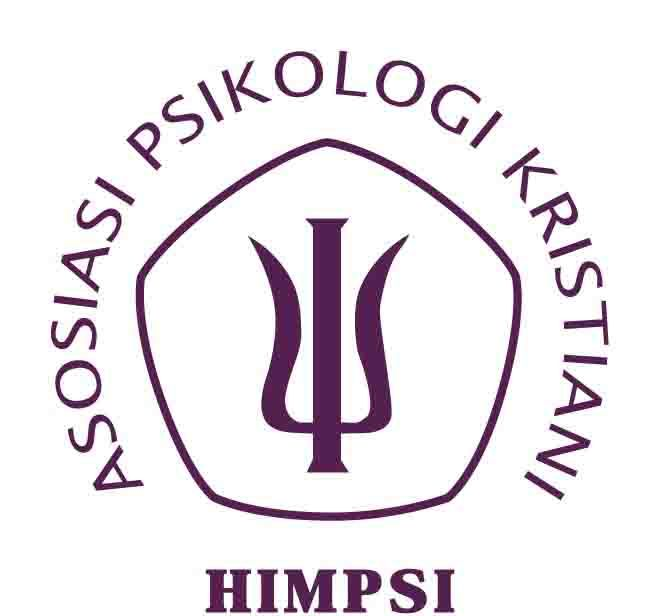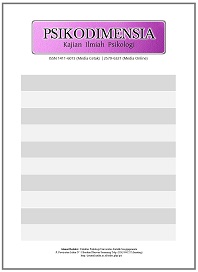Application of Group Positive Psychotherapy(GPPT) to Increasing Well Being in Women with Systemic Lupus Erithematosus (SLE)
Abstract
Keywords
Full Text:
PDFReferences
Bieling, PeterJ., McCabe, Randi E., & Antoni, Martin M. (2006). Cognitive Behavioral Therapy in Groups. New York: The Guilford Press
Butler. J., & Kern, M. (2016). The PERMA-Profiler: A brief multidimensional measure of flourishing. Retrieved from http://www.peggykern.org/questionnaires.html
Creswell, John W. Research Design: Qualitative, Quantitative, and Mixed Method Approaches 3rd Ed. (2010). California: Sage Publication
Cronbach,L.L. (1993). Essentials of Psychological Testing. New York: Harper & Row Publisher, Inc
Diener,Ed. (2009). Assesing Well-being: The Colected Works of Ed Diener. New York:Springer
Huppert, F. A. (2009). Psychological Well-being: Evidence Regarding its Causes and Consequences. E-Journal compilation International Association of Applied Psychology: Health and Well-Being. Retrieved from http://onlinelibrary.wiley.com/doi/10.1111/j.1758-0854.2009.01008.x/full.
Huppert, Felicia A., Timothy. (2013). Floirishing Across Europe: Application of a New Conceptual Framework for Defining Well Being. E-Journal of Well Being Institute & Departeent, University of Cambridge, Soc Indic Res. Retrieved from https://www.ncbi.nlm.nih.gov/pmc/articles/PMC3545194/
Kementrian Kesehatan Republik Indonesia. (2017). E-Journal online. Retrieved from http://www.kemkes.go.id/
Kim, Jeong Han., Berven, Norman L., Chan, Fong., Gonzalez, Rene., Miller, Deborah J., & Keck, Phillip S. (2011). Virtues in Relation to Subjective Well-Being for People With Chronic Illness and Disability, E-Journal of Asia Pacific Counseling. Retrieved from 210.101.116.28/W_files/kiss5/2f600760_pv.pdf
Magyar-Moe, Jeana L.(2009). Therapist’s Guide to Positive Psychological Intervention. New York: Academic Press
Moleong, L.J. (2011). Metode Penelitian Kualitatif. Bandung: Rosdakarya
Navarrete-Navarrete, N., Peralta-Ramirez, M.I., Sabio, J.M., Martinez-Egea, I., Santos-Ruiz, A., & Jimenez-Alonso, J. (2010). Quality-of-life predictor factors in patients with sle and their modification after cognitive behavioural therapy. E-Journal online. Retrieved from https://www.ncbi.nlm.nih.gov/pubmed/20841339
New York State Department of Health. (2008). Systemic Lupus erythematosus. New York: Author.
Park, N., Peterson, C., & Seligman, M. E. (2009). Strengths of character and well-being. Journal of Social and Clinical Psychology, 23(5), 603–619. Retrieved from 209-197-41-56.unassigned.ntelos.net/...Psychology.../Strengths_of_Character__Well
Pusat Data dan Informasi Kementrian Kesehatan RI Situasi Lupus di Indonesia. (2017). Retrieved from http://www.depkes.go.id/resources/download/pusdatin/ infodatin/Infodatin-Lupus-2017.pdf
Rashid, T., & Seligman, M. (2018). Positive Psychotheray: Clinician Manual. New York : Oxford University Press
Schattner, E., Shahar, G., Lerman, S., & Shakra, M. A. (2010). Depression in Systemic Lupus Erythematosus: The key role of illness intrusiveness and concealment of symptoms. Psychiatry: Interpersonal & Biological Processes, 73, 329-340. doi:10.1080/14681990410001715427
Seligman, M. E. P. 2011. Flourish. New York, NY: Simon & Schuster.
SIRS Onlien Direktorat Jenderal Pelayanan Kesehatan. (2016). Retrieved from http://sirs.yankes.kemkes.go.id/sirs/login.php
Sugiyono. (2012). Metode Penelitian Kuantitatif, Kualitatif, Dan R & D. Bandung : Alfabeta.
Sutisna, Dea C. (2010). Strategi Coping terhadap Stres akibat Penyakit Lupus pada Wanita Penderita Lupus. Skripsi Sarjana. Universitas Katolik Soegijapranata Semarang.
Wallace, D. J. (2007). The lupus book: Panduan lengkap bagi penderita lupus dan keluarganya. Yogyakarta: B-First.
Yayasan Lupus Indonesia. (2011). Retrieved from http://yayasanlupusindonesia. org/
DOI: https://doi.org/10.24167/psidim.v18i2.2247
Print ISSN : 1411-6073 | online ISSN : 2579-6321 View My Stats

This work is licensed under a Creative Commons Attribution 4.0 International License.




















